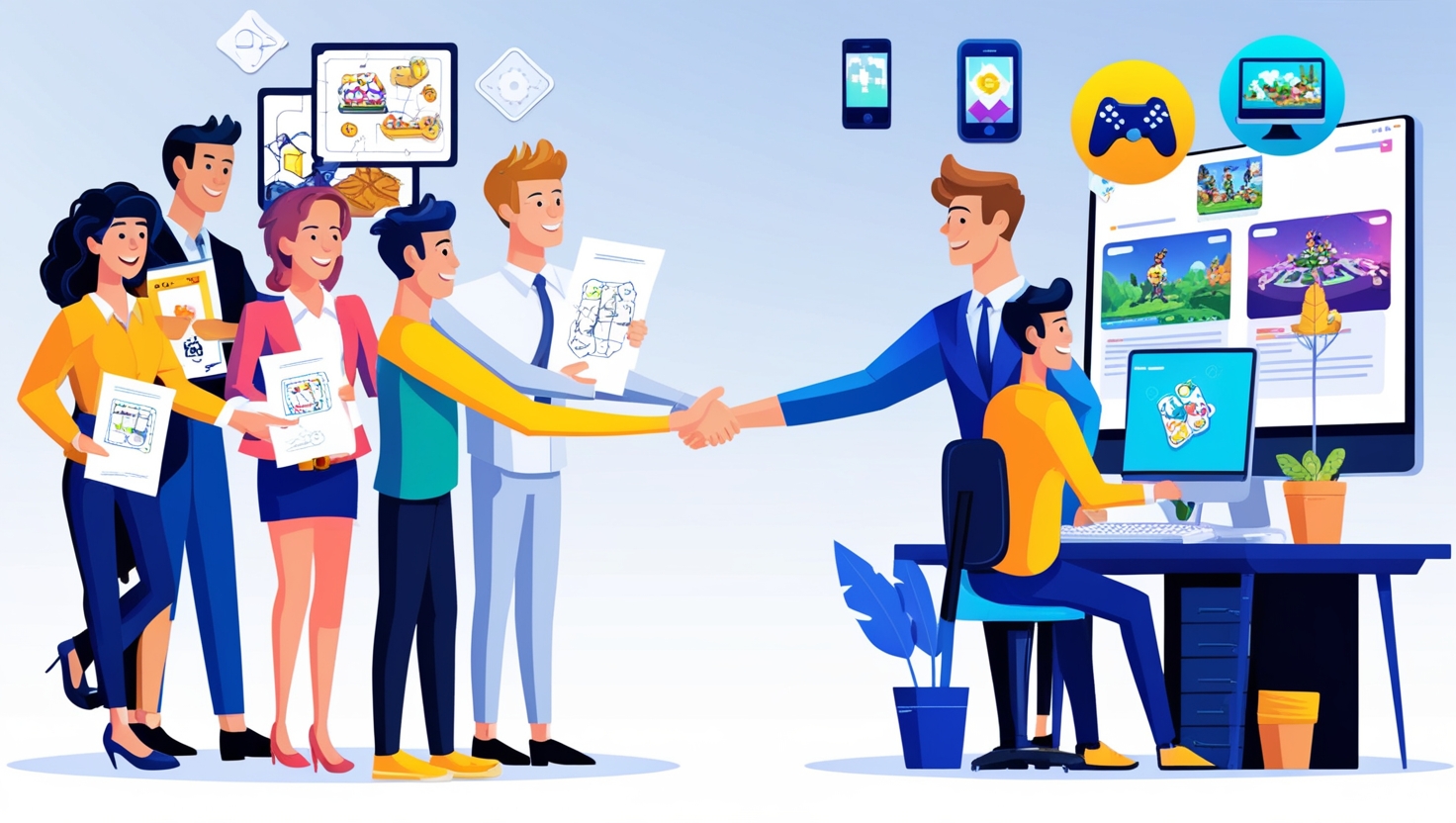
Deciding to make a game is an exciting but also a daunting task. With creative vision, technical complexity, and market expectations, game development can easily overwhelm in-house teams, especially if you’re new to the game. That’s why many studios and companies choose to partner with an outsourced game development studio.
But how do you actually get started? What should you prepare before approaching a studio? And what makes a collaboration successful? Let’s take a look at the main points.
1. Clearly define your vision
Outline your game’s core concept before contacting a development partner:
- Concept: What type of game do you want (mobile puzzle, PC strategy, cross-platform RPG)?
- Target audience: Who will play it? Casual gamers, kids, hardcore gamers?
- Core game loop: Why will it be enjoyable, and what will gamers do repeatedly?
👉 Although a complete game design document is not necessary, your partner studio will find it easier to realize your idea if it is more well-defined.
2. Set Goals and Expectations
- To test your idea, do you require a prototype?
- Is a fully launched product required?
- Do you prioritize budget optimization, quality, or speed?
You may help your outsourcing partner allocate the right personnel, technology, and workflow to your project by communicating these goals.
3. Choose the Right Development Partner
Not all studios are created equal. Seek a partner who has:
- Proven knowledge of the game’s genre.
- Cross-platform capabilities (PC, console, and mobile).
- Strong communication practices to keep you on track.
- Full-stack expertise (art, coding, testing, real-world operations).
For example, at Melior Games, we’ve helped clients around the world turn early ideas into polished, market-ready games.
4. Build together in iterations
Game development works in stages.
- Proof of concept: fast and affordable testing of mechanics.
- MVP (Minimum Viable Product): a game version with minimal functionality.
- Full game – expanded content, polished graphics, and optimized performance.
With outsourcing, you can change the size of your team at each stage, saving money and ensuring steady progress.
5. Don’t neglect graphics, sound, and UX
Even if your game idea is great, presentation is still essential.
- Visual style creates your brand identity.
- Sound design creates sensory immersion and emotional impact.
- For players, UX and UI ensure a seamless implementation.
Specialized artists, animators, and sound engineers who professionally manage these aspects are available to you through outsourcing.
6. Testing and Quality Assurance
Bugs, crashes, or insufficient optimization are often the cause of failed games, not poor design. A good outsourcing partner:
- Performs quality testing.
- Ensures compatibility across devices.
- Optimizes performance according to platform standards.
This stage is critical to player satisfaction and long-term success.
7. Long-term support and scalability
A successful launch is not the end, but the beginning. Your game is kept alive by post-launch updates, operational tasks, and player feedback integration. Outsourced studios can stay on board for long-term support or cut costs when your in-house team is ready to take the lead.
Final Thoughts
Outsourcing game development is not about communicating your vision, but finding a partner who can translate your ideas into a playable and profitable reality. The partnership will go more smoothly if you have your goals, vision, and expectations in place.
At Melior Games, we specialize in helping studios and companies of all sizes get started smartly – from prototypes to full-scale launches. If you’re ready to bring your idea to life, we’d love to be your development partner.




